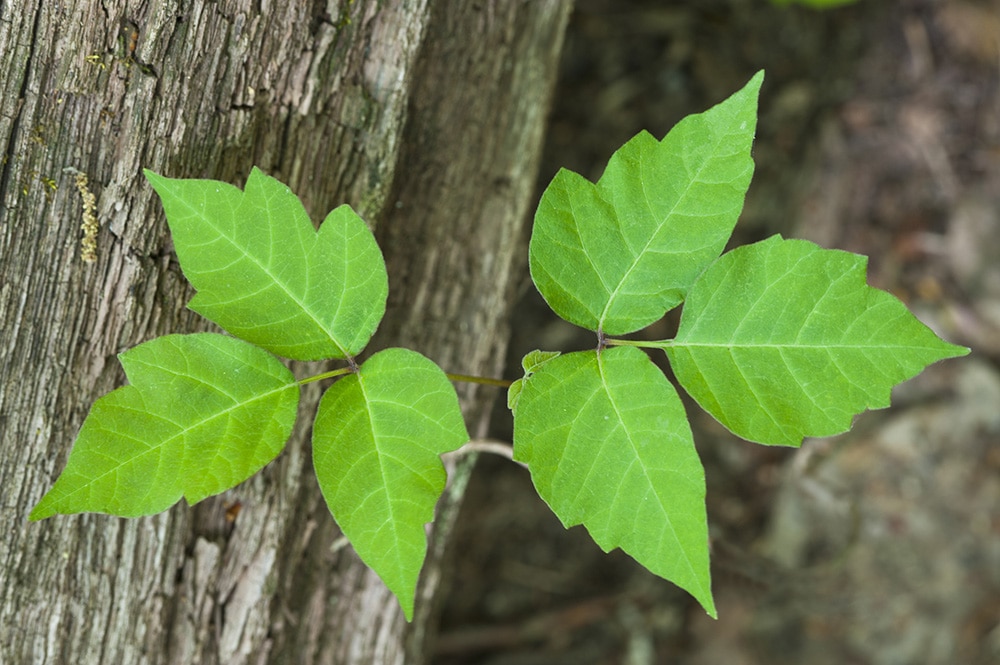Does Poison Ivy or Oak Have Thorns?

Poison ivy and poison oak are popular plants that cause an itchy, uncomfortable skin irritation and rash. The toxic oil on these plants is responsible for the painful skin reaction, and it is easily transferred by simply brushing up against the plant; it can even be spread from person to person on clothing or pets. If you have ever experienced poison ivy or oak, you know just how uncomfortable the symptoms can be. Identifying the plants is key to preventing poison ivy or oak irritation.
In this article, we’ll dive into the main ways to identify poison ivy or oak and the steps to take if you do accidentally encounter the plant.
What Does Poison Ivy Look Like?
To detect poison ivy or poison oak, it’s important to know what to look for. Both plants have three leaves that are pointed at the end and are often shiny. The leaves of poison ivy are typically longer and more pointed than those of poison oak, however, they should both be heavily avoided. In the fall, the leaves of these plants turn yellow or red before falling off – be aware that just because the plant appears to be dead, it can still spread oil and irritants. Poison ivy and poison oak also have small clusters of green or white berries that may appear in the late summer or fall.
Does Poison Ivy or Oak Have Thorns?
A popular question when trying to identify poison ivy or poison oak is whether these plants have thorns. The answer is no - neither poison ivy nor poison oak has thorns. These plants may be confused with other plants that do have thorns though, such as blackberry bushes. If you are unable to identify the plant, it’s best to use caution and avoid it together.
What Causes Poison Ivy or Oak Irritation?
The irritation caused by poison ivy or oak is an allergic reaction to a toxic oil called urushiol which is found on the plant’s leaves. Urushiol oil causes a red, itchy rash that develops into blisters. The severity of the reaction varies depending on the amount of oil you touch and the sensitivity of the individual. Urushiol oil can also be spread by touching contaminated objects, including clothing, pets, or gardening tools, leading to the indirect spreading of the rash.
What Does a Poison Ivy Rash Look Like?
A poison ivy rash often appears as red, itchy, and/or blistered patches on the skin. The rash may develop over days into bumps or fluid-filled blisters that weep or crust over. Left untreated, the poison ivy rash can last three to five weeks.
While the rash varies in severity from person to person, most people experience a mild rash, while others experience a more severe allergic reaction known as anaphylaxis, which can be life-threatening. It is important to monitor the rash and consult a physician if it continues, especially if it spreads to the mouth, eyes, or genitals.
How to Treat Poison Ivy Rash
If you knowingly encounter poison ivy, you must take action immediately. Begin by cleaning the infected area thoroughly, ensuring no urushiol oil remains on the skin, clothing, or tools. Tecnu Detox Wipes are the easiest method for on-the-go prevention. They can be used on skin and clothing to remove the oil and prevent spreading further. If you notice the rash is already appearing, use Tecnu Extreme Poison Ivy Scrub to remove oils in just 15 seconds.
If you know that someone in your home has a poison ivy rash, be sure to wash linens, bed sheets, and towels as the urushiol oil can spread via fabrics. Also, if your pets are likely to have come into contact with the plant or oil, thoroughly wash them with Tecnu Original as they can also transmit the rash.




